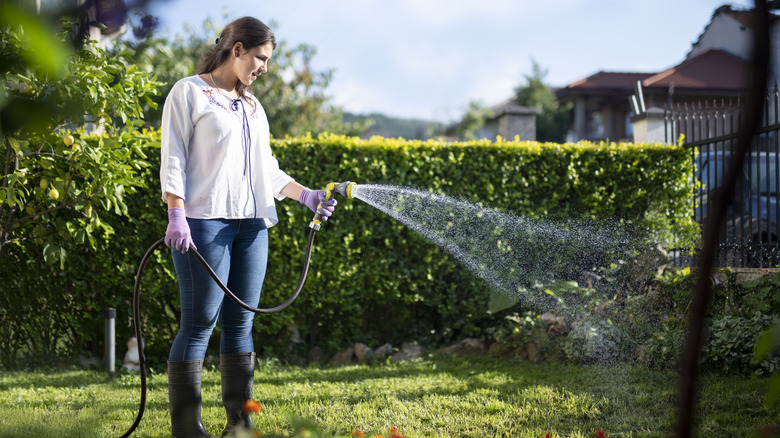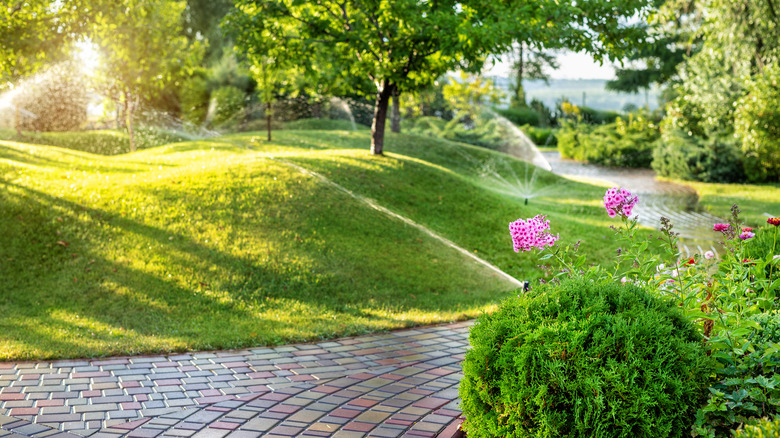Are You Watering Your Lawn Enough After Hydroseeding?
Achieving a lush and green lawn is a dream for many homeowners, and hydroseeding (the process of seeding a large area quickly with water and fertilizer) is an efficient technique for making it a reality. However, the success of hydroseeding depends heavily on proper watering. With the right amount of water at the proper time, grass seeds germinate effectively, resulting in a healthier, more vibrant yard. To ensure successful seed germination following hydroseeding, maintaining proper moisture levels is essential. For the first two weeks to a month after hydroseeding, it is best to water the area several times a day, with the goal of keeping the soil consistently moist without oversaturating it. This crucial period is when the grass seeds take root and establish themselves, setting the foundation for a robust lawn.
As the grass begins to grow and take shape, adjustments to the watering schedule may be necessary. Once the grass has grown enough to require regular mowing, it is typically safe to reduce watering to once a day. However, it is still important to monitor the soil moisture levels and ensure that it remains adequately moist without becoming too damp. Striking the right balance is vital during this stage to prevent waterlogging and maintain ideal growing conditions for the developing grass.
Watering methods for hydroseeded lawns
A sprinkler is an excellent option for watering larger hydroseeded areas more efficiently. Choose a type of sprinkler that provides gentle coverage to prevent soil erosion and damage to the young grass. Adjust the sprinkler's settings to ensure even coverage, and avoid watering excessively in one spot to prevent pooling or runoff. After the initial establishment phase, adjust the sprinkler's schedule to water once a day or every two days, aiming for deeper soaking during each watering session to encourage healthy root growth.
If you have a smaller area or don't have a sprinkler system, hand-watering can be a practical option for your lawn. Use a garden hose with a gentle spray nozzle to avoid disrupting seeds or young grass. During the critical establishment phase, your goal is to keep the soil consistently moist. To prevent overwatering and water runoff, spray the area lightly and evenly two to four times a day. The goal is to keep the soil damp without saturating it, as too much moisture can hinder root growth and result in soggy conditions. As your grass matures, you can gradually decrease the frequency of hand-watering.
Tips for hydroseeded lawn care
Regardless of the watering method, monitor the soil moisture regularly. Conducting a simple soil moisture test, such as using a moisture meter or even a screwdriver will help you gauge the watering needs of your yard. If you can easily insert the screwdriver into the dirt, you can delay watering until the soil dries out a bit. But if it's difficult to do so, it's time to water. Remember that slight deviations to the recommended watering schedule might be necessary based on specific lawn conditions and climate in your area. The key is to be attentive to your lawn's needs and adjust the watering routine accordingly.
It is also important not to use too much fertilizer. While it can help with early growth, too much can cause nutrient imbalances and harm your lawn. When your hydroseeded yard is still growing, it's also best to avoid using herbicides and pesticides because they can stop the seeds from germinating and the grass from growing. If you need to control pests or weeds, choose safer alternatives. For a hydroseeded yard to thrive, it's crucial to grasp its distinct needs and adopt a carefully planned watering routine. By doing so, your lawn can flourish into the envy of the neighborhood.


